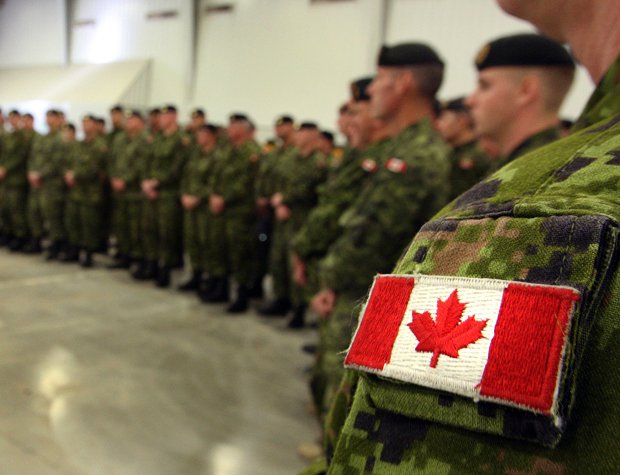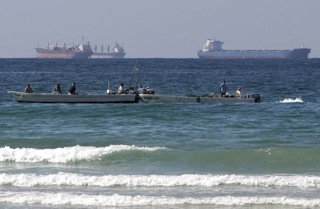Introduction
In this new installment, Senior Middle East Analyst Alexander Corbeil provides a map outlining rebel gains in Syria and regime attempts to rollback the Free Syrian Army. The following map covers events which occurred in November and a new one will appear at the beginning of each subsequent month, with the second installment to appear in January. This map of Syria highlights rebel actions (in blue), rebel events in Damascus and Aleppo (red), regime actions (in yellow), aircraft shot down (purple) and significant mortar attacks (green). By clicking on a point-marker it will reveal a detailed description of the event and in most cases a video shot by rebels or analysis of the importance of the event.
Implications
Mapping out a conflict in almost real time, having each event detailed on the map and updated on a daily basis, provides a variety of advantages. While the average person, and analyst for that matter, can follow unfolding events through newsprint, Twitter, Facebook and a variety of other social media conduits, the overall situation in a conflict becomes muddled. This is particularly true, in the Syrian case, when one does not have an advanced knowledge of Arabic or is unfamiliar with the country’s geography. Mapping out the conflict allows analysts and concerned onlookers to see the overall picture and acts as a tool to make educated guesses on how the conflict will unfold. While there are a variety of other factors—among which are rates of attrition, the availability of anti-tank and anti-air weaponry, morale of troops and even weather—knowing the physical location of the conflict and which belligerent controls crucial towns and roadways is key to understanding the next steps in this violent process.
What’s Happening in Syria?
From the following map one can see a variety of developments on the ground, the majority of which benefit the variety of rebel groups that compose the Free Syrian Army. While many would be happy with the developments on the ground, worryingly many of the advancements made by rebels in the South-East and to a lesser extent in the North-West have been with the crucial support of Jabhat al-Nusra, an al-Qaeda linked unit partially composed of fighters from Iraq. Today the group was designated a terrorist group by the Obama administration, after nearly 500 attacks within the country including many suicide bombings.
So what does the map tell us?
- The South-East: As mentioned above, Jabhat al Nusra with other rebel groups on November 15 began their push up the Euphrates River at al-Bukamal (South-East just across the border from Iraq). They have made immense gains up the river, capturing tanks, mortars and heavy machine guns. They now threaten the last major regime outpost in the east Dawr al-Zawr, where heavy clashes around the city’s military airport have occurred this month.
- The North-West: The more secular rebel groups have made very significant gains in the northern provinces of Aleppo and Idlib (North-West on the map). On November 18 the rebels captured Base 46 at al-Atarib in Aleppo province. A major victory, the groups involved captured fifteen tanks, mortars and heavy machine guns. In the process they killed 300 regime soldiers and captured crucial anti-air weaponry, including SA-7 and the more advanced SA-16 Man Portable Air Defense Systems (MANPADs). This has allowed rebels to shoot down a variety of regime aircraft in the area. Sheikh Suleiman airbase was also partially captured, before rebels were pushed back, but there, with the help of Jabhat al Nusra, they were able to capture a variety of SA-7s on November 27.
- Anti-Aircraft Capabilities: After the assaults on the two bases in Aleppo province the Assad regime has come under anti-aircraft fire with more advanced weaponry. Near Dar Taizzah rebels shot down a Sukoi SU-24 with the more advanced SA-16, videos in the map show the aircraft plummeting to earth and a rebel holding the advanced system claiming responsibility for the attack. In another video, shot on November 27 shows a regime helicopter being taken down, most probably with a SA-7, given that the missile punctures a hole in the helicopter rather than obliterating it.
- The Battle for Aleppo: Syria’s second largest city and its financial hub has been witness to a war of attrition for months. Led by the Tawhid Brigade, a outwardly religious rebel group from the surrounding rural areas, rebels in November fought the regime to a standstill. The two most significant events, were the taking of the Kindi University Hospital just to the North-East of the center of the city and an airbase also North-East near the village of Shamer. The Kindi Hospital is an important development, it opens up the road to Turkey, acting as a crucial supply route, provides medical supplies to the rebels and is on a hill overlooking the city. The most interesting event though is the taking of the airbase near Shamer. In the video provided, one can see a step-by-step undertaking. Rebels scout, plan, converge and take over the base, showing a high level of military capability. This may be a sign that the training of rebels in Turkey, and by some accounts in Kosovo, has paid off.
- Damascus, the seat of power: Bashar al-Assad is probably looking out the window of his presidential palace with dismay. The map which acts as the cover photo from this article was captured by rebel units in the South-East of the city. It purportedly was handed out by government troops to loyalist militias in Christian and Alawite enclaves of the city. It shows a desperate situation for the regime, which holds the areas in green and contests those in yellow. In red the South-East of Damascus is under rebel control and although they are under heavy bombardment by government forces and face the most elite (mostly Alawite) troops, the rebels in this area have held on. Significant gains have included the fact that rebels have come almost into range of mortaring the presidential palace (as indicated by the red and green place-markers connected by a blue line) which is detailed in a video. Also, the rebels were able to sack the Majr al Sultan helicopter base on November 24, a video of the attack is provided (near al Bilaliyah). Rebels have also been able to intermittently cut off the road to the Damascus International Airport, a crucial supply route for the regime. These developments call into question the capabilities of Assad’s elite units, many of which have been called to protect the capital from the East and the Golan Heights.
The Map
Provided below is the map of Syria. By clicking directly on the link below the map a page will open and it will lead you to a Google Map page. To the left of the map, is the legend which details the properties of each place-marker. You can hide this by pressing the small area on the top-right of the legend. Furthermore, you can zoom into any area on the map to see a more detailed picture of events on the ground. By clicking on the markers you will see a description of the event and if available to a video of the event or analysis which can be full screened on your computer. If you have any questions about the map or the implications of the data included please feel free to email alex.corbeil@atlantic-council.ca
View Syrian Rebel Gains and Regime Actions in a larger map
Excerpt



